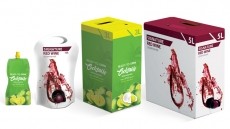Better knowledge means better wine: The curious and complex world of wine microorganisms

Microorganisms have myriad roles in wine production: from helping vines obtain nutrients from the soil, to the yeast and fermentation process that gives wine its delicate flavours and aromas. Microwine has been launched to delve into this complex - and poorly understood - world.
By studying microorganisms (such as bacteria and yeast) in the wine making process, producers will have more information on how interactions result in a good or bad wine. It also opens up the potential to identify and produce naturally isolated microorganisms - and could identify new or improved stains for winemakers.
From the grape to the bottle
The wine industry is worth over €220bn ($238bn) globally, and microorganisms have a critical role across viniculture and wine-making. Microorganisms lie at the heart of what gives each wine its properties - yet the community of microorganisms is poorly characterised.
Chr. Hansen, a supplier of bioscience based ingredients, is one of the industry partners in the project.
Hentie Swiegers, head of the wine innovation department, Chr. Hansen, told BeverageDaily.com most research will begin in earnest in August.
“The project will study the whole wine production chain, from the vine (for example, investigating the microorganisms in the soil and on the plant) to the winemaking process (such as the microorganism involved in the fermentation of grapes into wine) - and even to microorganisms potentially present in bottled wine,” Swiegers explained.
The main microorganism involved in winemaking is the yeast Saccharomyces cerevisiae responsible for the alcoholic fermentation (converting grape sugars into alcohol).
Another fermentation, called malolactic fermentation, is responsible for the conversion of malic acid (apple acid) into the softer, less acidic lactic acid (milk acid) and is primarily conducted by the lactic acid bacteria Oenococcus oeni.
Various microorganisms are already isolated for use in the wine industry - such as yeast to ferment wine - and Swiegers explains the project has the potential to identify and reproduce further strains.
Reducing spoiled or tainted wines
“Up until 60 years ago all wine was made using the microorganisms from the environment and allowing them to grow in the grape juice and thereby transform it into wine (the process is called spontaneous fermentation).
“The first microorganism to be isolated, produced and provided in pure form to the winemaker was the yeast Saccharomyces cerevisiae. Today most winemakers ‘inoculate’ - meaning add high concentrations of pure Saccharomyces cerevisiae to grape juice - in order to speed up the alcoholic fermentation and reduce faults.
“The knowledge from this project could lead to the identification of new or improved strain of Saccharomyces cerevisiae, Oenococcus oeni, Lactobacillus plantarum or other wine related microorganisms that could be produced and then provided to the winemakers.
“Also, the interaction between these organisms can give us valuable knowledge as to how we should optimally apply these organisms in winemaking to get the best results - such as when to inoculate, at what temperature, at what dose, together with which other microorganisms etc.”
Chr. Hansen has been producing such micro-organisms for the last 20 years.
“The introduction of natural pure strains of microorganisms by us and other companies over the last few years has undoubtedly contributed greatly to reducing the amount of spoiled / tainted wines, and it has improved the quality of wine considerably,” Swiegers added.
Aroma and sensory properties
Universities, research institutions, vineyards and private companies will all be part of the project. It is currently recruiting 15 PhD students, who will each look at different areas.
For example, a project at the University of Zaragoza in Spain will look at how wine microorganisms contribute to the aroma and sensory properties of wine.
Universidad Nacional de La Plata in Argentina will compare the microbiota of the ‘old world’ with that in the ‘new world.’
A project at the Technical University of Denmark will develop bioinformatics tools to help those investigating microbial communities.

















